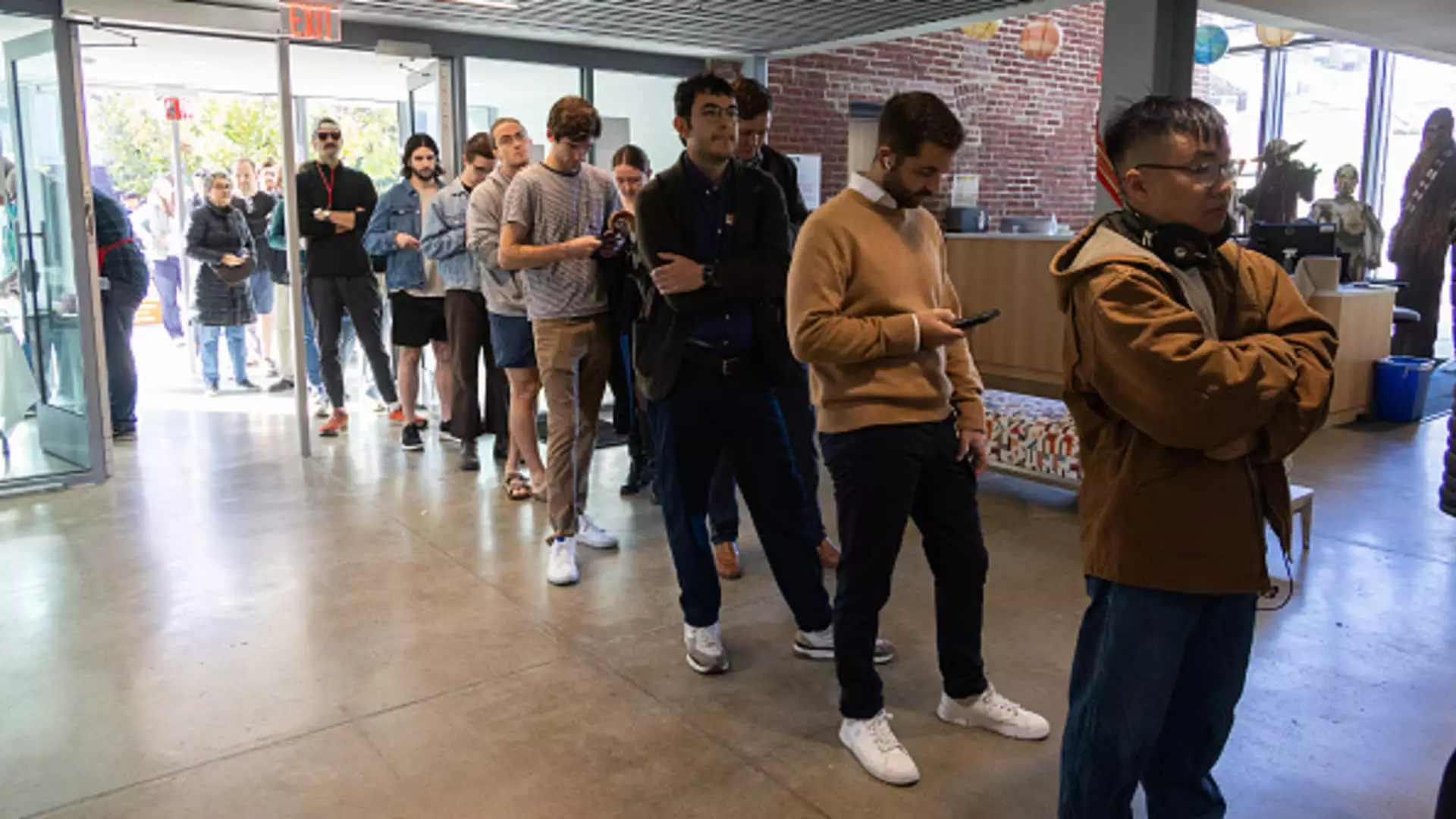The recent U.S. elections have underscored a significant and troubling gender divide in political preferences, revealing a polarized landscape. According to exit polls conducted by NBC News, women predominantly favored Vice President Kamala Harris, granting her 53% support versus the 45% for President-elect Donald Trump. Meanwhile, the male demographic rallied behind Trump with a 13-point lead, as 55% expressed support for him compared to Harris’s 42%. This staggering 21-point gender gap indicates an underlying shift in societal attitudes and the impact of gender on electoral decisions.
In analyzing the economic sentiments surrounding the election, we find that Trump’s support among men is chiefly attributed to his positions on economic matters. Particularly notable were the sentiments of Hispanic and Black voters in that demographic, who appeared increasingly pessimistic about the economy, particularly in the face of rising inflation and concerns surrounding job stability.
The economy emerged as the foremost concern for voters, eclipsing other factors and questions of policy. A significant portion of men who turned out to vote expressed feelings of economic disenfranchisement, mobilizing them toward Trump’s camp. Julia Pollak, the chief economist at ZipRecruiter, emphasizes that many men feel trapped without clear pathways for economic advancement. This sense of stagnation has led to a growing disillusionment which is particularly acute among men aged 25 to 54, who are traditionally viewed as being in their prime working years.
Data from the Pew Research Center highlights a troubling trend: non-college-educated men are exiting the workforce at alarming rates, while enrollment in higher education continues to decline among younger males. In 1995, young men and women were equally likely (approximately 25%) to hold a bachelor’s degree; however, this disparity has grown markedly, with recent statistics showing 47% of women aged 25 to 34 holding degrees, contrasted with only 37% of men in the same age group. This ominous statistic marks a burgeoning educational gap with potential long-term ramifications for the workforce and beyond.
The intersection of globalization and automation has transformed the traditional job landscape, particularly impacting blue-collar labor markets that once provided stable employment for many non-college-educated men. As manufacturing jobs decline, the certainty of job prospects diminishes. Experts suggest that this decline has left many men feeling neglected and abandoned by the system, creating a class of individuals categorized as NEETs—those ‘not in education, employment, or training’—who are disproportionately affected by these shifts.
Richard Fry from Pew underscores a fundamental principle of labor economics: if individuals do not receive rewards for their work, they are less likely to sustain their efforts. This philosophy resonates strongly with many disillusioned voters who are feeling the sting of economic pressures.
In stark contrast, women’s involvement in the workforce and their pursuit of higher education have seen promising advancements. Women are entering college and achieving degrees at increased rates. As highlighted by Ali Bustamante from the Roosevelt Institute, women today are prioritizing professional fulfillment, often delaying marriage and parenthood to establish careers. The political landscape reflects this shift, where women advocate more fervently for policy changes that would facilitate better work-life balance, such as accessible universal childcare and reproductive rights.
Despite these advancements, the 2024 presidential race revealed a paradox: reproductive rights emerged as a hot-button issue yet did not substantially drive women’s voting turnout. Exit polls illustrated that additional pressing matters, such as equal pay and affordable housing, were also integral to female voters’ concerns. The complexity of women’s political motivations reflects a multifaceted reality, challenging the notion that a singular issue dominates their electoral participation.
The 2024 elections illuminate the importance of recognizing and addressing the distinct needs and perspectives of both genders in formulating political strategies. While men are contending with feelings of economic disenfranchisement, women are forging ahead in the professional sphere, progressively acquiring greater mobility within society.
Analysts assert that although the political divide remains glaring, this does not signify an endpoint in the discourse surrounding gender and politics. Activists and leaders must continue to advocate for the necessary policy reforms that address the root causes of discontent for both men and women. The dynamics established in this election cycle could very well shape the political terrain for years to come, underscoring the need for collective efforts to bridge divides and ensure comprehensive representation.
While the electoral landscape remains complex and multifaceted, understanding and addressing the underlying economic and societal shifts could significantly impact future electoral outcomes and political engagement among citizens of different genders. As advocates for change, it is crucial to foster dialogue and create solutions that cater to the diverse needs of all constituents, paving the way for a more equitable and representative political future.

